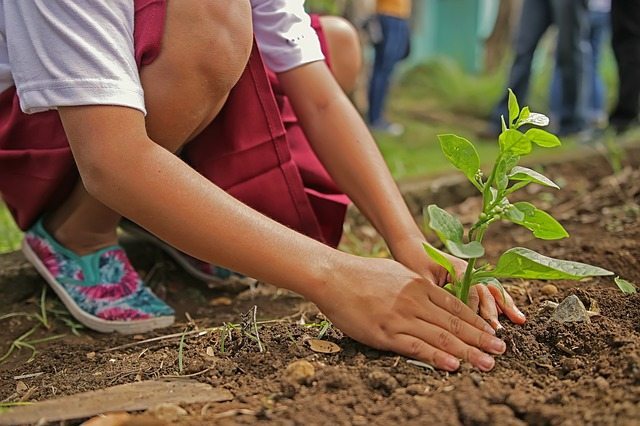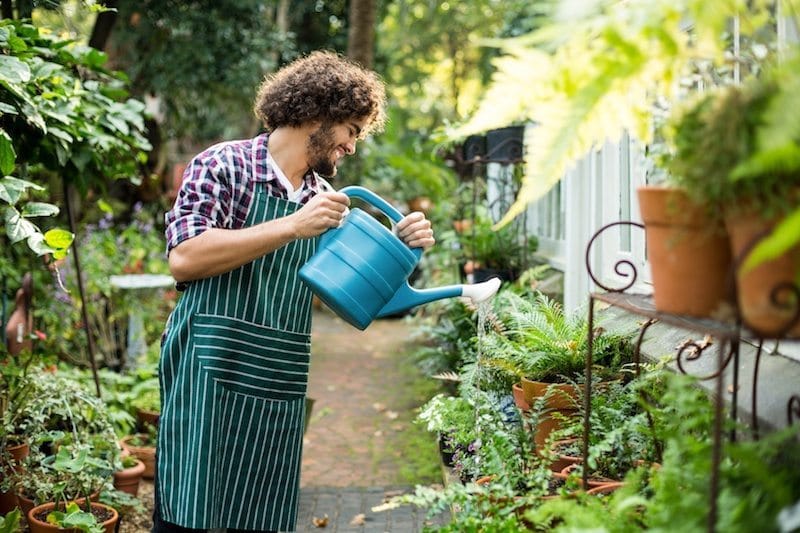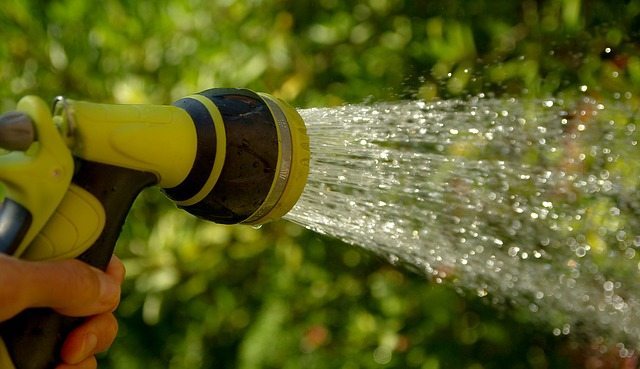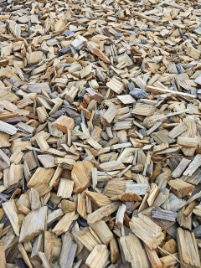So, you just started a garden and aren’t sure when and how much to water it.
We understand.
Not watering your garden enough can result in lower quality and quantity of crops. But an overabundance could drown your crops and plants.
Over-watered plants can look healthy at first. However, they soon start to droop, look mushy, and develop fungus.
We want you to succeed in your gardening endeavours so we created this article for you to learn when the right time is to water your garden as well as how to water plants.
Click to read what you'll find in this post
When to water your garden
Did you know you shouldn’t water your garden in the middle of the day?
Watering in the hottest part of the day means your watering efforts and the water will go to waste, because it will evaporate quicker during the heat of the day and less water will get to the roots. Not only that, but in Perth, you are only allowed to water before 9 am or after 6 pm to ensure water-wise garden watering. Check your approved watering days by researching “watering days in Perth” on your favourite internet browser.
The evening is a better time to water plants not prone to foliage diseases. However, it’s still not the best.
Why?
Although these plants may not be prone to foliage diseases, watering in the evening still increases their chances of getting them.
This is because the temperature is colder in the evening and there’s no sunlight. The water sits in the soil much longer.
When moisture sits in an organic material for more than a couple of hours, fungus can start to grow.
Water your plants in the early morning.
Morning is the best time to water your garden.
The sun is coming out. The temperature is higher than the evening, which means less chance for foliage diseases.
But there’s still a greater likelihood that the water won’t evaporate, and for early-risers or people with automatic irrigation systems, we recommend the optimal watering time to be around 6 am (to be adjusted throughout the watering season).
How to water plants
There are a couple different factors that determine how much you need to water.
First, what is your type of soil: clay, loam, or sand?
Sand is the loosest of the three types of soil. Meaning water will drain fast, or not get through at all and simply run off.
Loam is in the middle in terms of compactness. Which entails water draining not too fast but not too slow.
And clay is the most compact. So it will retain water the longest.
Read here for tips on optimising your soil, or here for how to check your soil for deficiencies.
Do you use mulch?
Mulch helps the soil retain moisture for much longer, so often reduces the need to water. If you are using a good quality mulch your soil will stay in better shape, be protected from the heat, and give your plants greater and longer access to the moisture in the soil.
Read here for our tips on mulching.
Type of crop or plants
Some plants or crops are more drought-tolerant than others. For water preservation purposes, you can stand to not water these as much:
- Onions
- Muskmelons
- Beets
- Asparagus
Nonetheless, look at the back of the seed packaging to determine if you need to water more often or if you don’t have to.
Crops that need watering often:
- Celery
- Strawberries
- Lettuce
- Cucumbers
- Peppers
- Squash
How to check if you need to water
Scoop up soil near the plant, and roll it into a ball. If you’re unable to form a ball, with the soil crumbling, you need to water the plant immediately.
If the ball is very sticky, there may be too much water. In which case you can check the soil the next day.

If the ball isn’t sticky but isn’t crumbling, it’s perfect.
For optimised and hands-free watering, an automated irrigation system is the most efficient way to keep your plants happy, with a drip-line system being preferable.
When hand-watering, don’t wet the leaves, try to make sure the water is mostly on the roots, a sprinkler irrigation system will simulate rain so is less likely to damage the leaves.
You are allowed to water 10mm into the soil on your watering days.
Water potted plants much less as they have more focused access to the water than plants in your garden.
To learn more about how to water plants or get us over to check on your watering system, contact our reticulation experts.



